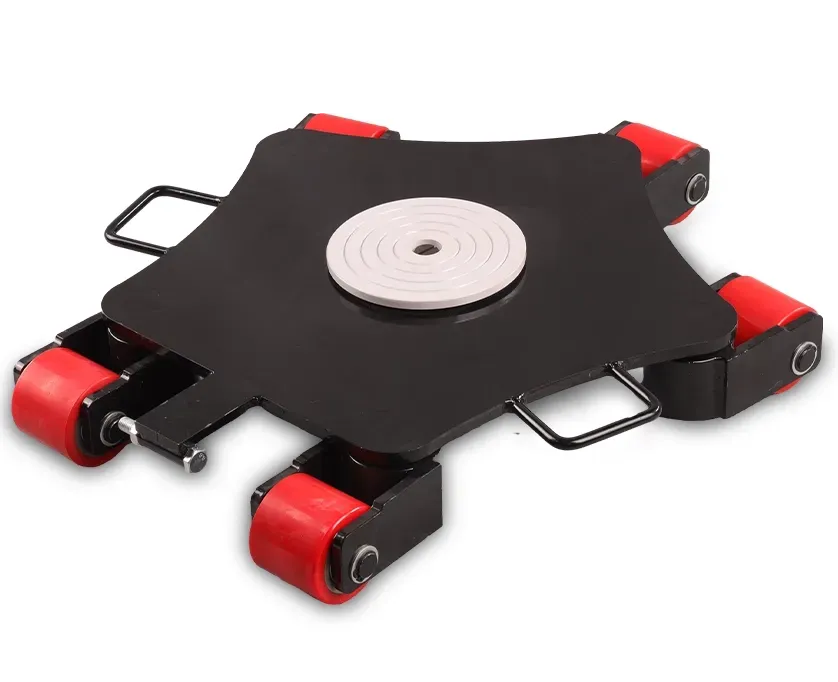Transporting Heavy Machinery Using Roller Systems for Efficiency and Safety
Moving Heavy Equipment with Rollers A Comprehensive Guide
The transportation of heavy equipment presents significant challenges due to the sheer weight and size of the machinery involved. Traditional methods of moving such equipment often pose risks to both the cargo and the operators. However, using rollers to move heavy objects has gained traction, offering a practical and effective solution for this common logistical hurdle.
Understanding Rollers
Rollers are cylindrical devices that facilitate the movement of heavy objects by providing a smooth and efficient surface over which the load can travel. They can be constructed from various materials, including steel, plastic, or rubber, depending on the specific needs and weight of the equipment. Rollers come in different sizes and load capacities, and their design often consists of either a fixed axle or a free-spinning mechanism.
Advantages of Using Rollers
1. Reduced Friction One of the primary benefits of using rollers is the significant reduction in friction. Rollers allow heavy equipment to glide over surfaces rather than dragging, which can cause damage to both the equipment and the ground.
2. Increased Mobility Rollers enhance the mobility of heavy equipment, allowing for easier maneuverability in tight spaces. This is especially important on construction sites or industrial areas where space can often be limited.
3. Safety Moving heavy equipment can pose safety hazards to operators and nearby workers. The use of rollers minimizes the risk of accidents associated with lifting or dragging heavy loads.
4. Cost-Effectiveness In many cases, utilizing rollers can be more cost-effective than hiring cranes or other heavy transportation methods. The initial investment in roller equipment can lead to long-term savings in labor and damage mitigation.
How to Move Heavy Equipment with Rollers
Step 1 Assessment
Before initiating any movement, assess the equipment's weight, dimensions, and the surface over which it will be moved
. Ensure that the rollers are rated for the specific load to prevent failure during transport.moving heavy equipment with rollers

Step 2 Prepare the Site
Clear a path for movement, ensuring that the surface is free from obstacles, debris, or uneven terrain. If the surface is too rough, consider placing plywood or similar materials to create a smoother path for the rollers.
Step 3 Position the Rollers
Place the rollers under the equipment strategically. Depending on the weight distribution, a good rule of thumb is to position the rollers at points where the load is balanced. This could involve using multiple rows of rollers and ensuring they are correctly aligned.
Step 4 Lift the Equipment
Using a hydraulic jack or similar lifting device, carefully raise the equipment just high enough for the rollers to be placed beneath it. Ensure that all safety measures are followed, including having personnel positioning themselves safely away from the equipment during this process.
Step 5 Initiate Movement
With the rollers in place and the equipment securely positioned, begin to gently push or pull the equipment. Employ the help of a team to coordinate the movement, ensuring that everyone is aware of when to pull and apply force.
Step 6 Monitoring and Adjustments
As the equipment moves, continuously monitor the rollers for any signs of failure or misalignment. If an issue arises, pause the movement and adjust accordingly to maintain a safe transport process.
Conclusion
Moving heavy equipment does not have to be a daunting task. By utilizing rollers, companies can streamline the transportation process, improve safety measures, and reduce costs. As with any heavy-lifting operation, proper planning and execution are vital to ensuring a successful move. By following the outlined steps and incorporating best practices, operators can navigate the challenges of transporting heavy machinery with efficiency and ease. With the right equipment and knowledge, moving heavy equipment becomes not only manageable but also a smooth operation that contributes to the overall efficiency of construction and industrial projects.
-
Unlock Seamless Relocation with Our Heavy Equipment Moving ExpertiseNewsJun.06,2025
-
Unleash Unrivaled Flexibility with Our Adjustable Gantry CraneNewsJun.06,2025
-
Unleash Heavy-Duty Efficiency with Our Industrial Gantry Crane SolutionsNewsJun.06,2025
-
Revolutionize Steel Handling with Our Magnetic Lifter RangeNewsJun.06,2025
-
Master Equipment Mobility with Premium Machinery Mover SolutionsNewsJun.06,2025
-
Elevate Your Material Handling with Magnetic Lifter TechnologyNewsJun.06,2025
-
YS Permanent Lifting Magnets: The Smarter Way to Handle SteelNewsMay.22,2025
